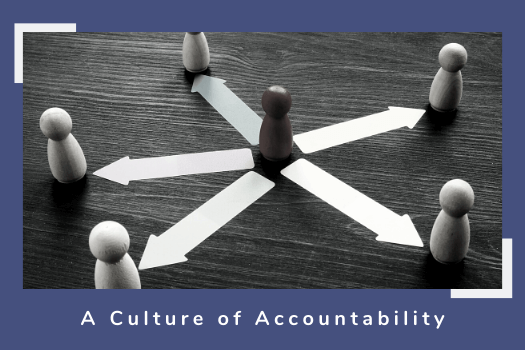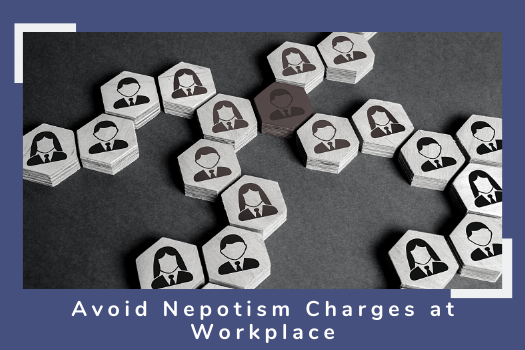A Culture of Accountability
Employee Engagement, Employee Relations, Rewards and Recognition
My presentation about the best definition of Accountability included what has been explained in Oz Principle:
“Accountability: An attitude of continually asking “what else can I do to rise above my circumstances and achieve the results I desire?” It is the process of “seeing it, owning it, solving it, and doing it.” It requires a level of ownership that includes making, keeping, and proactively answering for personal commitments. It is a perspective that embraces both current and future efforts rather than reactive and historical explanations”.
There is a thin line that separates success from failure and the great companies from the ordinaries. Below that line is a set of individuals or leaders that foster a culture of excuse making, blaming others, confusion, and an attitude of helplessness. While above that line are individuals, leaders, and cultures that breed an environment of a sense of reality, ownership, commitment, solutions to problems, and determined action. While losers languish below the line, preparing stories that explain why past efforts went awry, winners reside above the line, powered by the commitment and hard work. People and organizations find themselves thinking and behaving below the line whenever they consciously or unconsciously avoid accountability for individual or collective results. Stuck in what we call the “victim cycle,” they begin to lose their spirit and will, until, eventually, they feel completely powerless.
Now, you must be thinking of “staying on the line”, well, neither individuals nor organizations can stay on the line between these two realms because events will inexorably push them in one direction or the other. While both people and organizations can exhibit accountability in some situations yet manifest victim behavior in others, some issue or circumstance will arise to influence them to think and act from either an above the line or below the line perspective.
When individuals, teams, or entire organizations remain below the line, unaware or unconscious of reality, things get worse, not better, without anyone knowing why. Rather than face reality, sufferers of this malady oftentimes begin ignoring or pretending not to know about their accountability, denying their responsibility, blaming others for their predicament, citing confusion as a reason for inaction, asking others to tell them what to do, claiming that they can’t do it, or just waiting to see if the situation will miraculously resolve itself. This process, if unabated, can wreak both personal and professional havoc.
As we have seen earlier, individuals, leaders and teams when they demonstrate above the line behavior, they See It, Owe It, Solve It and Do it. These are also known as FOUR steps of accountability.
Why do people fail to see it? People most frequently fail to see reality because they choose to ignore or resist changes in the external environment.
Why do so many people fail to own it? People most often fail to own their circumstances because they cannot bring themselves to accept the accountability side of their story.
Why do people fail to solve it? As people begin solving problems they often encounter obstacles, expected and unexpected, that can stimulate a temptation to fall below the line into the victim cycle.
Why do people fail to do it? Most people who fail to Do It can’t or won’t resist the gravitational pull from Below The Line which can so easily drag someone back into the victim cycle, wasting valuable time, energy, and resources, ignoring and denying, making excuses, developing explanations, pointing fingers, getting confused, and waiting to see if things will get better. In our experience, this happens most often because people naturally resist the perceived risks associated with becoming fully responsible for results. A fear of failure can create a terrible burden that makes taking the final step to accountability virtually impossible.
Now that we have understood the meaning of accountability and concept of below the line and above the line, what shall be done to imbibe accountability as a habit?
Creating accountability in others is a process and doesn’t happen as a result of some singular event. Many leaders mistakenly think that once their people have been exposed to the concept of accountability and understand it, they will never fall below the line again. This “event” approach to accountability, the notion that accountability happens at an identifiable moment, doesn’t work. Leaders who make this mistake tend to use accountability as a hammer, nailing people when they fall below the line in an unending game of “I got you.” Such hammering will only propel people back into the victim cycle. Therefore, you must help people feel empowered by the concept of accountability, not trapped by it.
Therefore, whenever you hear a victim story or a below the line excuse, you shall use the following five key steps to coach that person away from reacting and toward learning:
- Listening. Look for instances of victim behavior, and when you engage someone in a discussion of their victim story (for the purpose of coaching them) or hear "below the line excuses", listen sympathetically to what they have to say.
- Acknowledging. Acknowledge the victim facts and obstacles that someone thinks have kept him or her from getting desired results. Show the person that you understand their feelings and know yourself how hard it is to overcome those feelings. Agree that the challenges are real or that bad things do happen to good people.
- Asking. If someone seems deeply attached to a victim story, gently move the discussion toward the accountability version of the story. Continually pose the question: “What else can you do to achieve the result you desire or overcome the circumstance that plagues you? What can we control, and what can’t we control in this situation? What are we pretending not to know about our accountability in this situation? What have we learned from our recent experience?
- Coaching. Use the steps to accountability to help a person identify where he or she currently stands and where the person needs to go to obtain desired results. Emphasize that falling below the line on occasion is only natural but staying there never yields results. Stress how rising above the line will produce positive outcomes.
- Committing. Commit yourself to helping a person create an above the line action plan and encourage him or her to report on their activities and progress. Don’t end a coaching session without setting a specific time for follow-up, allowing sufficient time, but not too much time, to elapse. If the person does not approach you at the appointed time, take the initiative yourself. During these follow-up sessions, continue to look, listen, acknowledge, ask, coach, and recommit. Provide honestly, caring feedback about progress, and express congratulations for every improvement.
In an ideal world, it wouldn’t be necessary for leaders to coach accountability because everyone would acknowledge their accountability in every situation. However, since this is not an ideal world, and since everyone is fallible, leaders must make coaching a daily habit. And while we have emphasized proactive coaching, which focuses on the present and the future, we have also come to appreciate the need for the review of the past, what we call accounting for progress. When handled properly, an after-the-fact accounting can provide a person with an opportunity to measure progress toward results, learn from previous experience, establish a sense of accomplishment, and determine what else can be done to get the desired results. While most leaders intuitively know the value of urging people to account for their actions, many often fail to do it well.
Ultimately, personal accountability means accepting full responsibility for results. It requires the sort of attitude popularized in the Nike footwear television commercials: “Just Do It.” If you don’t Do It, you’ll never reap the most valuable benefit that is derived from full accountability: overcoming your circumstances and achieving the results you want.
I finished my presentation among a huge round of applause. I shook hands with all participants and exchanged visiting cards.
As I was driving back home, I analysed the impact of presentation in my mind to figure out probable response. Are they happy? Will they engage me? Is there anything I can improve upon? Exactly after TEN days of my presentation, I received a call from the HR Head, Nilesh, asking me to send my commercials as their Executive Team has decided to engage me for a pilot batch of coaching 15 Managers and inculcate accountability in their approach and attitude. Based on the outcome of the pilot batch, they will take a decision to engage me further or not.
I shared my commercial details. They were happy with the results. Last month they extended my contract and gave another batch of 25 Managers.






